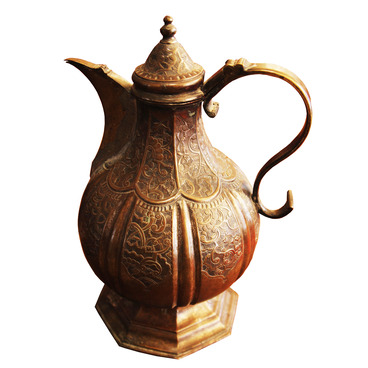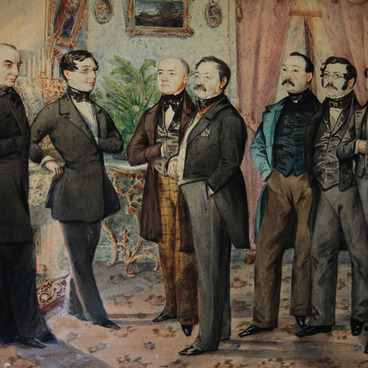The word ‘cantonist’ came to Russian from the Prussian language where a ‘canton’ meant a regiment. Starting from 1805, in Russia, the term ‘cantonist’ referred to minority age children of inferior military rank people. They formed up a kind of stand-alone social stratum. As early as on the day of birth, they became subordinate to a military department and liable to military service. Thus, the state actually ‘enslaved’ soldiers’ children – both legitimate and illegitimate ones.
Before they were 14 years of age, they had to enter a cantonist school. There were no alternatives as it was prohibited for such children to get education in any other institution. In 1827, such schools also started accepting gypsies, homeless children, Polish rebels and noblemen who failed to justify their nobility title, as well as young recruit Jews.
Young fellows started their military service in garrison schools. First, they learned basic skills – minimum basics of how to read and write, and then studied fortification, gunnery and other aspects of war science. The practice was that children who fell behind were normally reallocated to studying crafts: smith craft, timbering, shoemaking, etc. And in contrast, the most successful students, upon finishing the course, spent another 3 years in the school for advance training. Some of those stayed further and became teachers in their alma mater institution. Others went straight to service, directly to armed forces. However, the years spent in the cantonist school were not factored into the term of obligatory military service.
In the times of Emperor Nicolas I, educational courses in cantonist schools were significantly diversified. Special-purpose institutions were opened: engineering and gunnery institutions, military and medical schools, auditor and surveyor schools. The educational term was also extended. Young men who were 10 to 14 years of age attended secondary education schools, and those of 14-18 years of age attended high schools. During the reign of Nicolas I, headcount in such institutions across the country increased up to 36 thousand students.
Cantonist schools provided the regular army with reliable resources. Soldiers’ grown-up children became non-commissioned officers, watchmen, draftsmen, topographic surveyors and clerks.
The cantonist ‘stratum’ existed in Russia for half a century. This practice of ‘enslaving’ soldiers’ children, the same as the “cantonist” title itself, were abolished in 1856 by Alexander II via his coronation manifesto.
Before they were 14 years of age, they had to enter a cantonist school. There were no alternatives as it was prohibited for such children to get education in any other institution. In 1827, such schools also started accepting gypsies, homeless children, Polish rebels and noblemen who failed to justify their nobility title, as well as young recruit Jews.
Young fellows started their military service in garrison schools. First, they learned basic skills – minimum basics of how to read and write, and then studied fortification, gunnery and other aspects of war science. The practice was that children who fell behind were normally reallocated to studying crafts: smith craft, timbering, shoemaking, etc. And in contrast, the most successful students, upon finishing the course, spent another 3 years in the school for advance training. Some of those stayed further and became teachers in their alma mater institution. Others went straight to service, directly to armed forces. However, the years spent in the cantonist school were not factored into the term of obligatory military service.
In the times of Emperor Nicolas I, educational courses in cantonist schools were significantly diversified. Special-purpose institutions were opened: engineering and gunnery institutions, military and medical schools, auditor and surveyor schools. The educational term was also extended. Young men who were 10 to 14 years of age attended secondary education schools, and those of 14-18 years of age attended high schools. During the reign of Nicolas I, headcount in such institutions across the country increased up to 36 thousand students.
Cantonist schools provided the regular army with reliable resources. Soldiers’ grown-up children became non-commissioned officers, watchmen, draftsmen, topographic surveyors and clerks.
The cantonist ‘stratum’ existed in Russia for half a century. This practice of ‘enslaving’ soldiers’ children, the same as the “cantonist” title itself, were abolished in 1856 by Alexander II via his coronation manifesto.



